Successful Application for the Best Commodity Trading Strategy

Best Commodity Trading Strategy
Learn how to implement successful strategies for commodity trading. The outlined commodity strategy is a designed plan for making money in the commodity market. Throughout this beginners guide on how to trade commodities you’ll learn all the basics of an increasingly popular investment activity employed by institutional players.
If this is your first time on our website, our team at Trading Strategy Guides welcomes you. Make sure you hit the subscribe button, so you get your Free Trading Strategy delivered every week directly to your inbox.
If you’re looking to trade commodities, it’s important to understand that the US-China trade war has inflicted a new paradigm shift on what drives the price of commodities. It’s time for a change in the commodity strategy that you’re currently using if you want to account for this new dynamic.
The trade war is a pressing fundamental theme that has opened the door for new opportunities in the commodity market. The US-China trade war has built a lot of pressure behind the financial system which has materialized in higher intraday volatility.
Our rules for the best commodity intraday trading strategy will reveal the secrets of the commodity trading game.
Below you’ll get an explanation of what are commodities:
What are Commodities in Trading?
In financial markets, commodities are tangible physical assets that have inherent physical worth. The raw materials people use in their day-to-day life are called commodities. Humans use energy resources to sustain themselves, metals to construct tools, and agricultural products to feed themselves.
In layman terms, commodities are the real products around this planet that make everyday transactions and economies turn. Commodities are a type of physical wealth–this is different from stock and bonds, which merely represent wealth. Things like crude oil, corn, cattle, livestock, gold and everything that has a physical substance that people will trade.
Commodities are also used by a lot of traders.
How traders are taking advantage of the commodity market?
Commodity traders can access the futures market and use futures contracts without actually taking the physical commodity.
In essence, we don’t want to physically trade the actual commodity. Instead, we will trade commodity contracts.
The commodity market can comprise physical trading in derivatives using futures, options, and forward contracts. These are all different types of derivatives contracts. The future market was first created to serve the needs of commercial traders. Futures give farmers the possibility to arrange the buying and selling of commodities for a specific price on a future date.
Read our beginner’s guide to derivatives here: Introduction to Derivatives Trading – Guide to Financial Derivatives.
Commodities can be divided into two types:
- Soft commodities.
- Hard Commodities.
Soft commodities include agricultural products such as wheat, cotton, coffee, cocoa, and sugar. While hard commodities include mined products such as gold, silver, and oil. Commodities are vital elements of the global economy.
The top 10 most traded commodities in the world are:
If you don’t have the capital to trade directly commodity futures you can trade CFDs on commodities. You can speculate on the world’s most traded commodities and take advantage of the volatility by trading CFDs. You can also indirectly access the commodity market by trading stocks.
How the future commodity market works is very simple.
Buying and selling commodities are not the same as buying and selling stock shares.
See below:
How Commodity Trading Works?
Let’s understand how commodity trading works.
With the help of a real example, we’ll explain a commodity strategy used by a cotton producer.
A cotton farmer wants to protect himself from possible adverse future prices and a potential loss at the harvest time. This farmer can use the cotton future market to hedge this risk. The cotton farmer has some associated costs with producing and harvesting his cotton crop.
In order for him to cover all the incurring costs and hopefully to make a profit, he needs to have some type of certainty about the future price of cotton. Since the crop will be ready to harvest only a year later, he can secure the cotton price in advance. By selling a cotton futures contract for a specified price and for delivery at a specified date in the future, our cotton farmer can lock in a favorable price that will make him a profit at the end of harvesting.
Weather conditions can also have a major impact on his cotton crop and can severely impact the price of commodities. While the contract holder can earn strong returns, the farmer benefits from gaining price security. In the end, both parties end up in a more favorable position.
Let’s now look at the advantage of commodity trading.
See below:
Why use Commodity Strategy?
There are many benefits that come with commodity trading.
We’re going to outline the three main benefits of commodity trading.
Firstly, it helps diversify your portfolio and includes real assets in your wealth-building machine. Secondly, commodity assets are easy to understand in terms of the supply and demand equation. The supply and demand imbalances can cause real price disruption in the commodity market.
The US-China trade war escalation has already impacted the demand for commodities. Tariffs increase the cost of accessing goods, causing prices to rise.
To learn more about the supply and demand intricacies please visit: Supply and Demand Trading – Learn about Market Movement.
Lastly, when the economy is in a recession, money is losing its value as a result of inflation. However, the price of commodities increase during high inflation and they are seen as a hedge.
Let’s now see who are the main market participants in the commodity market.
See below:
Who Trade Commodities?
We can distinguish different market participants in the commodity market. We can split market participants into three categories:
- Hedgers
- Speculators
- Arbitrage
A large number of market participants provides the needed liquidity for running an efficient market. Each of these market participants has diverse investment objectives and risk profile.
Let’s briefly examine what role these market participants play in the commodity market.
The commodity hedgers are generally commercial producers and consumers. They are also called commercial traders. Their role in the market is to manage spot market risk. The commodity price volatility is an important source of risk, so the commercial producers engage in hedging, which is a form of protection against possible losses derived from commodity price fluctuation.
For example, a corn producer will hedge his market exposure by selling corn futures since it’s exposed to the risk of falling corn prices.
The next category is the speculators.
The commodity speculators are those traders who speculate on the direction of future prices with the main goal to make a profit. Trading commodity futures is an investment option for anyone who doesn’t intend to take delivery of the actual commodity. The speculators in the commodity market liquidate their exposure before the expiration date.
We can further distinguish two types of commodity speculators:
- Large speculators – also referred to as the non-commercial traders (i.e. Banks and Large Financial Money Managers).
- Small speculators – also referred to as the non-reportable traders (typically retail traders).
Last but not least, the arbitrage traders seek to buy and sell commodities to profit from the price differential across different markets.
Where to Buy Commodities?
If you want to trade in commodities you have three primary options:
- Chicago Board of Trades CBOT.
- Chicago Merchantile Exchange.
- NYSE Liffe.
All of these commodity exchanges are regulated by the CFTC and SEC. Of course, commodities can also be traded off-exchange in the over the counter market. Exchange trade based commodities need to satisfy specified minimum requirements and have to be physically deliverable unless the contract is closed before expiration.
Learn more about the OTC markets here: Over-the Counter Trading – How the Whales Trade.
Alternatively, you can trade CFDs on commodities. Unfortunately, these types of instruments are only available outside of the USA.
Moving forward, we’re going to outline some successful strategies for commodity trading.
See below:
Commodity Trading Tips
Trading the most popular commodities is a wonderful opportunity to make big profits. What is even more interesting about the commodity market is that its extended long-term trends make it the favorite market for position trading.
Check out HERE how the positional trading strategy made the top 25 highest-earning hedge fund managers a whopping $17 billion in profits in 2017.
So, the first tip is that more profits can be made if you’re a positional trader. However, the best commodity intraday trading strategy can also be used to speculate on the intraday high volatility.
Now, let’s examine some other commodity trading tips that can help you become a better trader.
See below…
Commodity Tips #1: Commodities Have Strong Cyclical Trends
You need to be aware of the nature of commodity cycles.
Typically, all commodities move in cyclical trends, which are powered by the investment behavior of producers. Many of these commodities will experience price changes that are entirely seasonal. If you know how to identify the commodity cycles, you’ll be able to successfully trade them.
Below we’re going to outline, key points of why commodity cyclical trends are so strong:
- Compared to forex currencies, commodities have 3x higher volatility.
- And, 35% more volatility than stocks.
- Supply and demand analysis are the main drivers.
- Economic conditions, geopolitical factors are also factors that affect these cyclical trends.
Now…
If you want to trade commodity cycles here is what you need to do. Forecasting the commodity cycle comes down to following a 5-step process:
- An increase in demand.
- Capital expenditure to increase production, which leads to higher prices.
- The higher prices will start to erode the demand.
- The supply increases above the demand, this will lead to a fall in commodity prices.
- Capital expenditure is curbed due to lower prices, which reduces supply and subsequently creating supply and demand equilibrium. And the process starts all over again.
Commodity Tips #2: Use Volatility to your Advantage
What do we mean by this, is that each commodity has different levels of volatility.
For example, oil prices tend to move more than coffee or wheat.
What you have to do is to simply establish the price range of your favorite commodity and trade accordingly. This will help you achieve two things. First, you can adjust your position size based on the level of volatility and secondly, it can help you determine appropriate levels for your take profits if you’re day trading the commodity market.
Commodity Tips #3: Commodity and US Dollar Correlation
The value of the US dollar can influence commodity prices. Between the commodity prices and the value of the US dollar, there is a negative correlation.
For example, if the greenback appreciates, typically commodities like gold and crude oil will move lower. The same is true in reverse.
So here’s the lesson…
If you want to capture the big commodity cyclical trends, you need to learn how to implement all the above-mentioned tips.
Now, let’s study some MCX commodity trading strategies that will use some of the commodity trading tips mentioned above.
Successful Strategies for Commodity Trading
Before we outline the best commodity intraday trading strategy, it’s important to understand that trading commodities are different from trading Forex or stocks. Every financial asset has its own set of unique characteristics. The commodity market has its own behavior, that’s why some strategies are more suitable than others to generate profits from commodity trading.
We’re going to reveal some of the most well-kept commodity trading secrets only known by successful commodity traders.
Let’s now see what commodity trading strategy you can use to buy and sell products in the commodity market.
See below:
Commodity Strategy #1: Find Your Niche Commodity Market
Most reputable commodity traders have specialized in trading a single commodity such as gold, cotton, wheat or oil. Each of these markets is very unique. You have to find your own niche and master a single market. Get familiarized and know the ins and outs of your niche commodity. This is the first step to build a successful strategy for commodity trading.
Finding your market is simply a matter of realizing which market you feel more confident trading. If you understand better the price action in the gold market, you probably are better off to become a gold trader.
But, if your commodity strategy yields better results in the coffee market, you’re probably better off becoming a coffee trader.
You don’t have to make your trading life more difficult than it needs to be.
Even on the institutional level, there is a common practice for bank traders or hedge fund traders to be assigned to only trade one market. The common practice is to have one trader or team assigned to trade gold futures and another trader to focus on the oil futures.
Below we outlined the golden rule of trading commodities.
Commodity Strategy #2 How to use 200-day MA to Buy Commodities
If you want to predict which commodity trading levels are worth to base your trade-off, then look no further than the 200-day moving average.
The 200-day EMA is regarded as being the standard measurement of bullish and bearish trends in the commodity market. However, a breakout of the 200-day EMA is not always a reliable signal. The reason is that like with all technical indicators it’s prone to give multiple false signals.
See the commodity chart below:
A simple solution to this very common problem is to wait for the breakout of the 200-day EMA and a retest.
This means that you can buy/sell commodities at the first retest of the 200-day EMA.
See the example below where we highlight on the gold chart:
Now, we know that not many traders have the right amount of capital to invest in the long-term.
Holding a position for a yearlong period is not suitable for everyone.
If you don’t have a big account balance and the patience to ride the cyclical commodity trends, you’re better off if you stick with short term commodity trading.
Below we’re going to outline how to trade commodity with little money.
Let’s get started…
Commodity Strategy #3 Day Trading Volatility Breakout
The volatility in the commodity market is a key source for big profits. However, not all commodity markets are created equal. Some tend to exhibit more intraday volatility than the others.
For example, crude oil is one of the most volatile commodities. On the other hand, agricultural commodities have much lower average trading volume and subsequently are less volatile.
For this commodity intraday trading strategy we’re going to use the previous day’s high and low.
Here’s how it works:
- Note down the highest and lowest prices from yesterday’s trading session.
- Multiply the previously recorded values by 0.25.
- The new value should be added and then subtracted from the current day’s opening price.
Basically, the result of this 3-step process is that you establish a trading range. And, the potential breakouts of this range can lead to profitable commodity signals.
Here is an example.
For this strategy, the rules are simple. A breakout above the established range is a buy signal, while a break below is a sell signal.
Now, this is important…
The next commodity strategy is a popular method used by commodity producers to hedge risk.
See below:
Commodity Trading Strategy #4 Cross Hedging
Cross commodity hedging also known as cross hedging is a technique that involves buying and selling two positively correlated commodities.
Commodity hedging is a very complex topic.
But, cross-commodity trading is simple once you understand the main thing that makes it work.
So, the most important factor to consider is the degree of correlation.
For example, gold and silver are part of the same precious metal group. So, they have a high degree of correlation.
Check out how to use the gold and silver ratio to properly implement the cross hedging strategy.
Commodity Strategy #5: Trend-Following Commodity Strategy
Trend-following strategies tend to work exceptionally well in the commodity market. After all the trend is your friend. And, the chances of success are always higher when you have the trend on your side. The golden rule of trading is to follow the trend.
Let’s now examine why the trend following principles work so well in the commodity market.
Commodities prices are derived from the law of supply and demand. The interaction of supply and demand can inflict bullish and bearish trend development. When the forces of supply and demand are at work, the commodity trends are powerful and long-lasting in nature.
To confirm this, we can look at the oil market dynamics. More specifically, at what caused oil prices to enter a bear market in 2014?
The demand for oil significantly dropped due to a slowdown in the world’s second-largest economy China. The 2014 drop in oil price brought the price of the most used energy source to $26 per barrel.
While commodities tend to exhibit long-lasting trends, it’s also commonly known that on an intraday level they are extremely volatile. And, with the use of leverage, this was the catalyst for day trading commodity futures to become excessively popular.
Another great example is look at oil in 2020-21 a massive bull run.

Commodity Strategy #5: Best Commodity Intraday Trading Strategy
In this section, we’re going to outline the rules for the best commodity intraday trading strategy. Day trading commodity futures offer an excellent opportunity due to the high intraday volatility. Even a small price fluctuation can generate significant profits and or losses.
Learn how to day trade online with our day trading for dummies guide: 6 Tips Every Beginner Should Know.
The best indicator for trading commodities is the commodity channel index.
The CCI indicator was really designed to find cyclical trends in the commodity market and to be used as a bearish or bullish filter.
See how the pro’s trade using the CCI Trading System.
The CCI indicator doesn’t look for overbought and oversold signals. You have to understand that when we’re above +100 CCI reading that is actually showing strength. In other words, the dominant market energy is to the upside.
A simple day trading strategy for commodities is to buy when the CCI indicator crosses above the +100 reading. The exit strategy is as simple as the entry strategy. Take profit once the CCI indicator turns to the downside.
Now, to filter the bad trades you can only take those trades that shows the CCI moving into strength territory, without putting in too much effort (see figure below).
Final Words – Commodity Strategy
Learning successful strategies for commodity trading can help you navigate the day-to-day volatility as well as riding sustained bullish and bearish trends. To become a skilled commodity trader, you need more than a commodity strategy. You need discipline and hard work. Nowadays, one of the major challenges facing commodity traders is the US-China trade war.
The ongoing US-China trade war has already been the catalyst for higher intraday volatility. However, with our best commodity intraday trading strategy everyone can become an astute trader and take advantage of the intraday volatility.
Thank you for reading!
Feel free to leave any comments below, we do read them all and will respond.


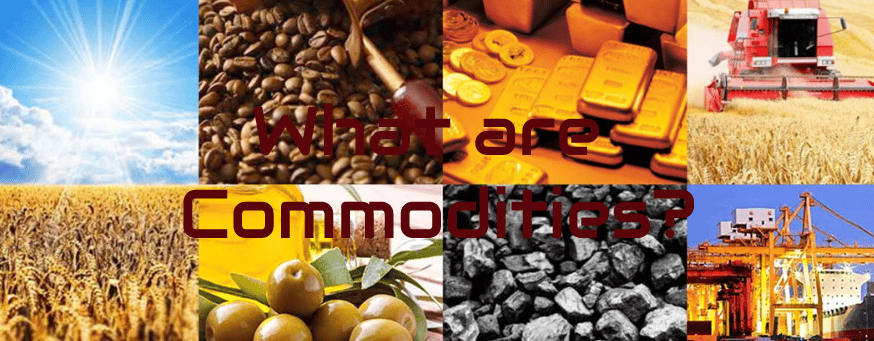

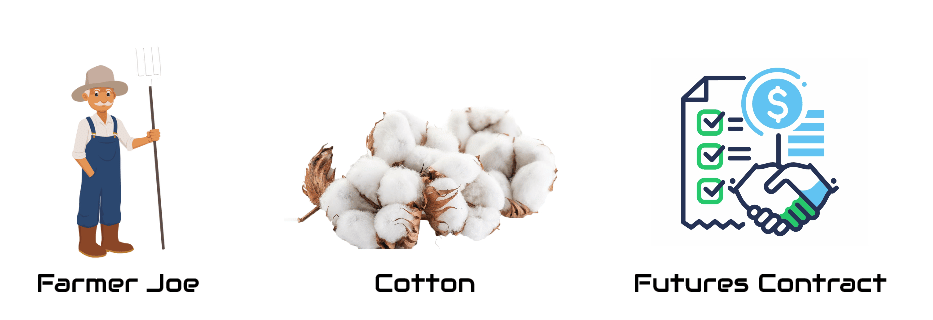
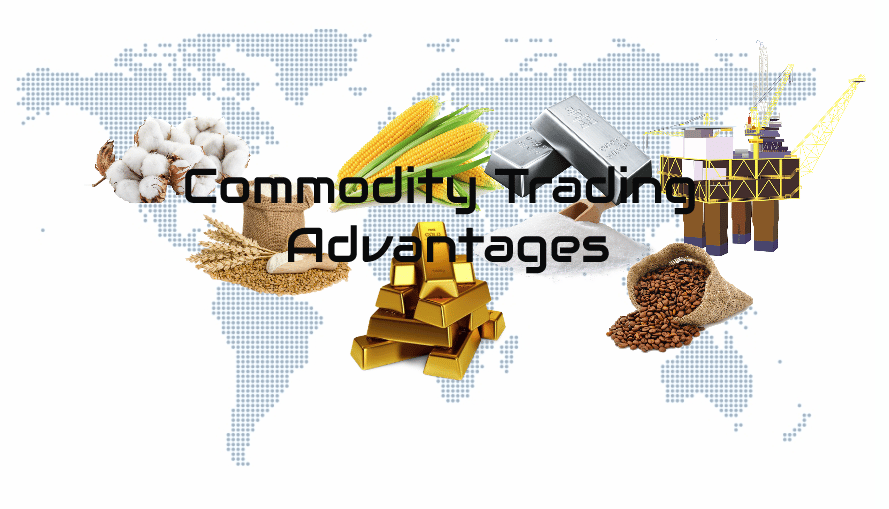


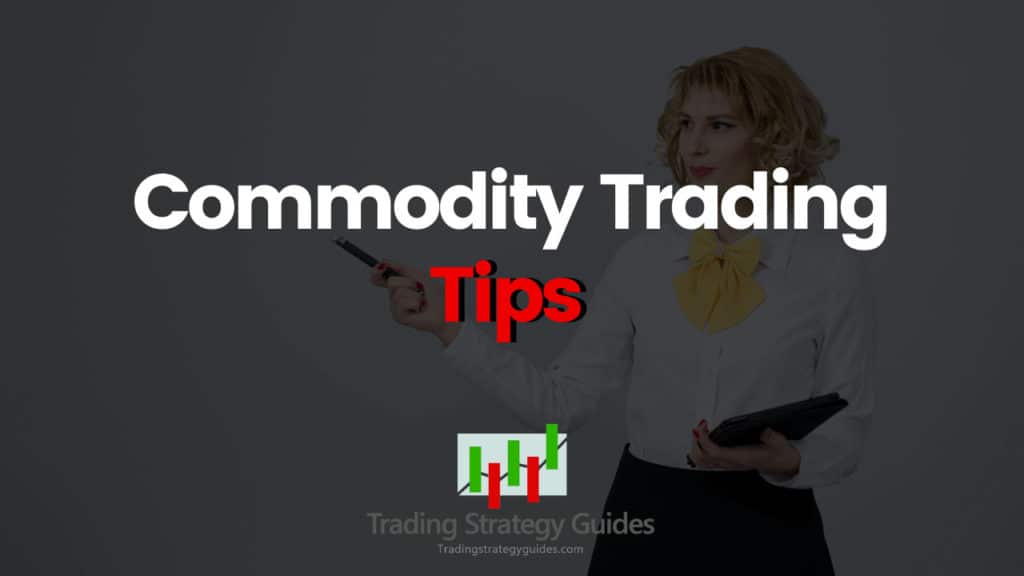



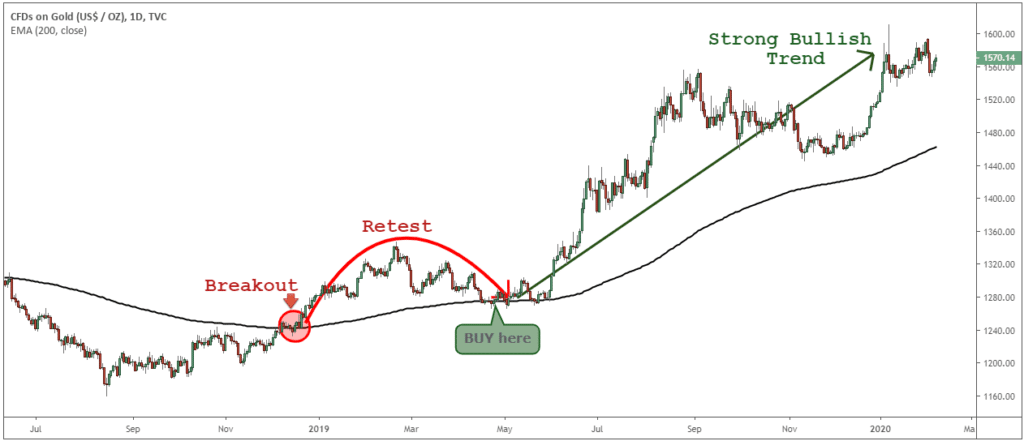
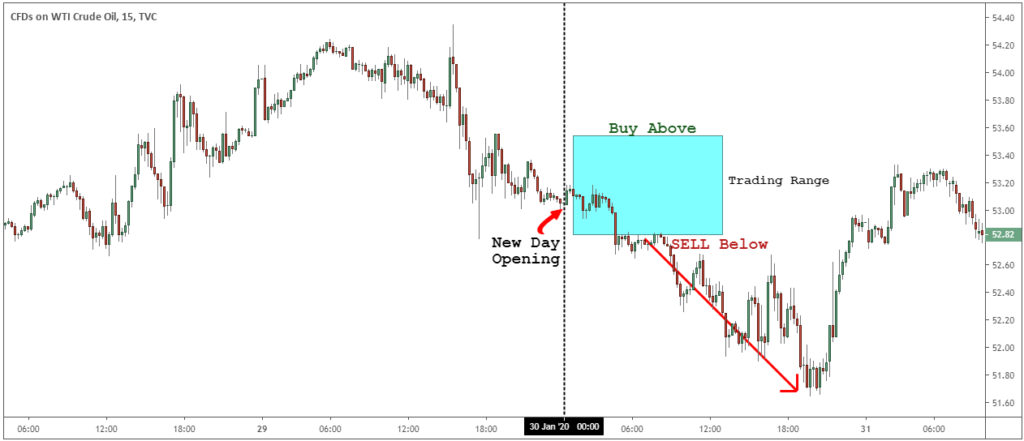




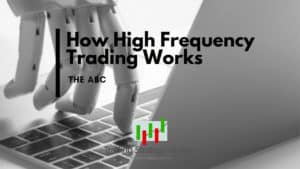




excellent post, very informative. I wonder why the other experts of this sector do not notice this. You must continue your writing. I’m confident, you’ve a great readers’ base already!